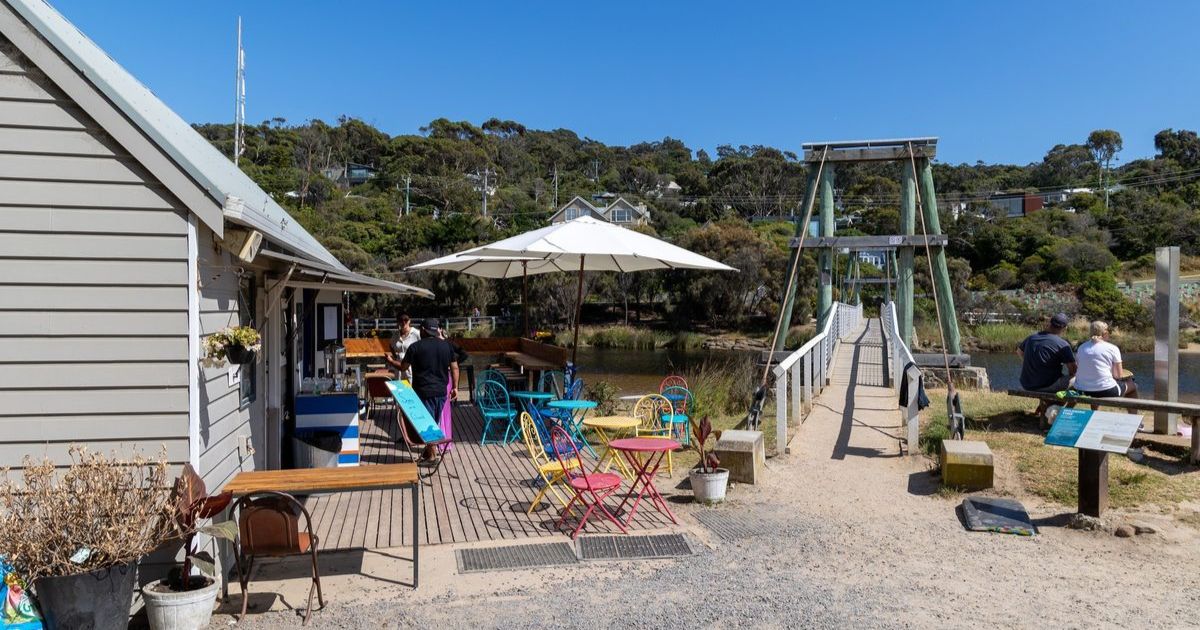Letters To The Editor – October 18, 2018
Ball committee says thank you
Dear Editor,
The Torquay Kindergarten Committee would like to warmly thank sponsors of the 2018 Torquay Kinder Winter Ball.
Without the continued generosity of local organisations and businesses, we would not be in a position to raise funds that help to enhance the learning programs and resources of the Torquay Kindergarten. Ultimately, your support helps to provide an enriching and empowering early educational experience for our children.
We are extremely grateful for the support and generosity provided by our local businesses and organisations. Thank you again.
The Torquay Kindergarten Parents Committee
Torquay
SCEG calls for more climate action
Dear Editor,
The UN’s Intergovernmental Panel on Climate Change released its Special Report on Global Warming of 1.5 degrees last week, highlighting the enormity of the global challenge in limiting global warming to 1.5ºC above pre-industrial levels.
Limiting this warming to 1.5ºC would avoid or reduce the severity of dangerous climate scenarios.
When compared with a 2ºC increase, limiting change to 1.5ºC would reduce the number of people both exposed to climate-related risks and susceptible to poverty by up to several hundred million, halve the human population exposed to water stress, and narrowly avoid the near-outright loss of coral reefs globally that a 2ºC change would bring.
Locally, limiting warming to 1.5ºC would reduce sea level rise on our coast by 10cm by 2100, and reduce our risk of devastating bushfire events.
Unfortunately, global progress against this 1.5ºC goal has stalled.
At home, the Australian Government’s recent quarterly report showed that our own carbon emissions continue to increase.
Surf Coast Energy Group (SCEG) notes the current lack of cohesive federal policy around reduction of carbon emissions. Urgently needed are whole-of-economy policies that can drive “fast and steep” decarbonisation of our energy systems, as well as across our transport and land use sectors.
The IPCC Special Report states that coal-powered electricity generation will need to be phased out by 2050 to keep warming to below 1.5ºC.
Policy is urgently needed to achieve this decarbonisation of our energy market, and successfully transition coal jobs over coming decades.
At the local level, SCEG works to build awareness of climate and energy issues, convening our community around positive energy projects. We believe that a safe and sustainable future remains within our grasp, but action is required now. As we rapidly approach this critical juncture, SCEG hereby call on our elected leaders to consider the needs of future generations.
Surf Coast Energy Group
Torquay
A tower for the Quay, please!
Dear Editor,
I write to add my support to Gordon McComb’s letter in your paper on October 4 (“Quay needs a tower”).
I live quite close to the sporting oval where the new dual-purpose tower is proposed to replace an existing light pole and, over the past five years, have experienced difficulties similar to those detailed by Gordon McComb. It is very frustrating indeed!
It appears that Telstra has a thorough understanding of the issues involved and has put together a well-considered proposal to address them.
I, like Gordon McComb, can’t wait to see it eventuate. I’m in the “bring it on” brigade. And as soon as possible, please!
If you’re in the same predicament, please speak up to illustrate that strong support exists from the residents affected by this black spot in telecommunications.
As noted in the original article in the Surf Coast Times on September 27 (“Quay group don’t want new phone tower”), you can contact barbara. [email protected] with your views.
Barbara appreciated hearing from me when I emailed with my supportive comments.
Jan Biram
Torquay
Shopping centre a better spot for tower
Dear Editor,
Mr McComb states The Quay desperately needs a new phone tower (“Quay needs a tower”, Letters, October 4).
The community is not arguing against improving communication facilities, we are arguing against having it located in the Quay Reserve, which is a focal point for community leisure with established playground, sporting and wellness facilities.
There has to be a more appropriate location that will not have such a major visual impact on community open space. The commercial area of Dunes Shopping Centre surely would be more acceptable.
Helen Day
Torquay
“Hinterland” shouldn’t be applied to Grossmans Road
Dear Editor,
I doubt many folks have read the Hinterland Strategy the Surf Coast council is currently deliberating on.
Essentially the proposal is to throw a blanket of restrictions over 60 per cent of the shire. It is unlikely to have much effect on 90 odd per cent of the shire’s population – but it will have serious future consequences for the 10 odd per cent it does effect – none of whom are developers to my knowledge. Mind you, your ratepayer money has paid for all this, and the likely objections to follow.
At a council meeting on October 2, council listened to submissions from ratepayers from within this proposed area. Thirteen of the 14 presenters were objecting based upon many reasons – such as: very poor community consultation, a lack of vision and policy transparency, restrictive proposals, no succession plans for existing land owners, and it being a blanket strategy that was trying to deal with very diverse circumstances.
The one supporter only gave their submission via a recording and failed to show in person.
Almost half the presenters were from the Deans Marsh area – they clearly feel very let down by council and isolated by this kind of proposal. Effectively they feel council is dictating their future and have little or no regard for that community’s position.
The strategy is encouraging large agribusiness, economics and tourism – and inflicting them with those ideals. There is no room for existing farms or businesses to downsize, diversify, or to hand their life’s work onto their kids. One wonders how much the ratepayers have paid for our council to commission this poor strategy?
The bit that irks us is the fact that council are throwing the same Hinterland blanket over Grossmans Road too (where we live). Have a look at the Hinterland Strategy map on the SCS website. One would excuse us for feeling confused if you lived where we do. Council proposed the Spring Creek development 10 or more years ago. It was “full on”. Then the protests happened and it all got overturned. Then 1km west of Duffields got passed and now the rest is “full off”. They want to lock it up and throw away the key with little consultation – flying under the radar.
The definition of the word “Hinterland” includes: “the remote area of a country away from the coast or banks of major rivers… the back of beyond, the middle of nowhere, the backwoods, the wilds, the bush, remote areas, a backwater”. All of this in the definition.
Grossmans Road may once have qualified some of those descriptions, but not today. We are surrounded by low-density residential and that will be high density once the west of Duffields Road thing starts.
We cannot farm our block as the strategy proposes we must – dogs have killed and ripped apart our livestock in the past 10 years with all the new development. Council is being unrealistic in locking up this area between Grossmans and the Great Ocean Road, while allowing high density residential blocks to come right up to farm fences. A far more sensible and environmentally sensitive town boundary for Torquay west would be reducing to one to two acre blocks as a transition – protect the creek for a fair distance for sure – but there’s not a lot of common sense about these days I guess.
The whole strategy is flawed, but it’s scary how few people know what Big Brother and Sister are up to.
Denis & Darina Ryan
Torquay
Thai–Burma Railway 75th anniversary
Dear Editor,
Seventy-five years ago, the Thai–Burma railway was completed on October 16, 1943, costing the lives of more than 2,800 Australian Prisoners of War (POWs), including some 700 at Hellfire Pass.
During the World War II, the Japanese sought to maintain their armies in Burma and began construction of a 420km railway between western Thailand and Burma through harsh jungles and mountains.
Construction of the Thai–Burma railway began in October 1942 and by the time the line was finished, around 270,000 Asian labourers and some 60,000 Allied POWs, including Australian, British, Dutch, and American troops had worked on its construction.
The most notorious site along the railway is Hellfire Pass, where prisoners were required to drill, blast and dig their way through solid limestone and quartz rock. Shifts lasted up to 18 hours a day during the most intense period, a regimen that continued for some six weeks. The Pass was named both for the brutal working conditions and the eerie light thrown by bamboo fires as skeletal figures laboured by night, reminiscent to some of Dante’s Inferno.
Private James ‘Snow’ Peat found strength in these difficult conditions by thinking of home, and those waiting for him. He had a wife and little girl. And the will to live. He said “I’m not dying in this bloody place, and that’s all there is to it.”
This attitude, and the resilience and determination shown by Australian POWs during the World War II epitomises the Anzac spirit forged more than two decades earlier during World War I.
We remember the some 75,000 Asian labourers who died alongside the Allied prisoners while working on the railway and we honour the service and sacrifice of the some 12,500 Allied POWs who died, including more than 2,800 Australians.
Lest we forget.
Darren Chester MP
Minister for Veterans’ Affairs


















